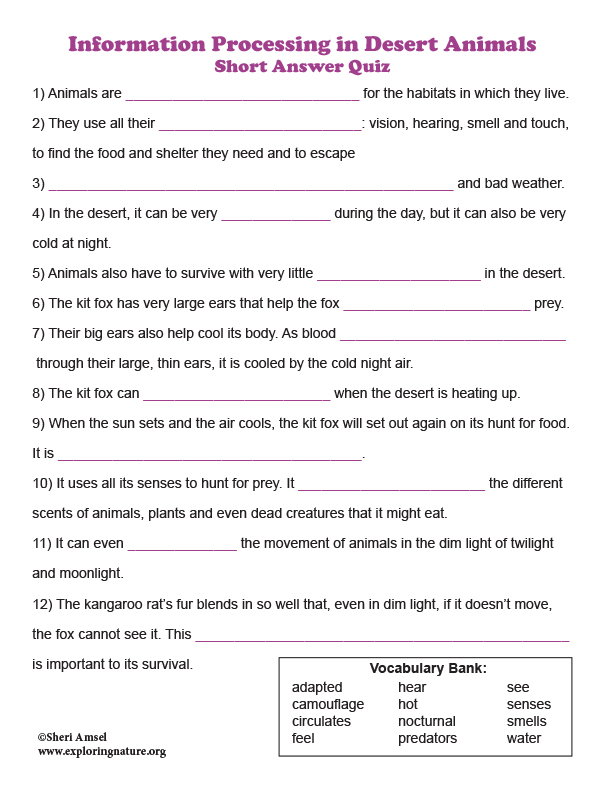

LS1.D: Information Processing: Animals have body parts that capture and convey different kinds of information needed for growth and survival. Animals respond to these inputs with behaviors that help them survive.
Read about Information Processing in Desert Animals before taking this quiz.
Use the Information Processing in Animals - Mini-Poster as another resource.
LS1.D: Information Processing
• Animals have body parts that capture and convey different kinds of information needed for growth and survival. Animals respond to these inputs with behaviors that help them survive. Plants also respond to some external inputs. (1-LS1-1)
____________________________________________________________________________________________________________
LS1.D: Information Processing
• Different sense receptors are specialized for particular kinds of information, which may be then processed by the animal’s brain. Animals are able to use their perceptions and memories to guide their actions. (4-LS1-2)
Performance Expectations Students who demonstrate understanding can:
4-LS1-2. Use a model to describe that animals receive different types of information through their senses, process the information in their brain, and respond to the information in different ways. [Clarification Statement: Emphasis is on systems of information transfer.] [Assessment Boundary: Assessment does not include the mechanisms by which the brain stores and recalls information or the mechanisms of how sensory receptors function.]
When you research information you must cite the reference. Citing for websites is different from citing from books, magazines and periodicals. The style of citing shown here is from the MLA Style Citations (Modern Language Association).
When citing a WEBSITE the general format is as follows.
Author Last Name, First Name(s). "Title: Subtitle of Part of Web Page, if appropriate." Title: Subtitle: Section of Page if appropriate. Sponsoring/Publishing Agency, If Given. Additional significant descriptive information. Date of Electronic Publication or other Date, such as Last Updated. Day Month Year of access < URL >.
Amsel, Sheri. "Information Processing in Desert Animals - Short Answer Quiz" Exploring Nature Educational Resource ©2005-2024. December 14, 2024
< http://exploringnature.org/db/view/Information-Processing-in-Desert-Animals-Short-Answer-Quiz >
